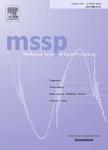版权所有:内蒙古大学图书馆 技术提供:维普资讯• 智图
内蒙古自治区呼和浩特市赛罕区大学西街235号 邮编: 010021

作者机构:Vietnamese German Univ Fac Engn Binh Duong Vietnam Ulsan Natl Inst Sci & Technol UNIST Dept Mech Engn Ulsan South Korea Gyeongsang Natl Univ Grad Sch Mech & Aerosp Engn Jinju South Korea Hanyang Univ Dept Elect Engn Seoul South Korea
出 版 物:《MECHANICAL SYSTEMS AND SIGNAL PROCESSING》 (Mech Syst Signal Process)
年 卷 期:2025年第226卷
核心收录:
基 金:Basic Science Research Program through the National Research Foundation of Korea (NRF) - Ministry of Education [2020R1A6A1A03040570] National Research Foundation of Korea (NRF) - Korea government (MSIT) [2023R1A2C2003130, RS-2024-00397400]
主 题:Feedback linearization Super-twisting algorithm Trajectory tracking Under-actuated cranes Uniformly ultimately bounded Variable control gain
摘 要:Gantry cranes have been extensively deployed across various industries as powerful transportation equipment. However, their under-actuated nature often leads to conflicting performance aspects, i.e., high-speed, accurate trolley positioning and payload swing angle suppression. Additionally, during operation, these systems may be affected by internal and external disturbances, both matched and mismatched, making robust control a significant challenge. Hence, enhancing operational efficiency and robustness in crane control remains crucial for improving overall productivity. To tackle these issues, we propose composite trajectory tracking control (CTTC) designed to improve both precision and robustness in such systems. Our approach employs the feedback linearization-based super-twisting sliding-mode technique. First, we transform the crane system into its normal form using feedback linearization and coordinate transformation techniques. Next, we develop a generalized variable gain super-twisting sliding-mode algorithm with a coupled sliding surface, to effectively handle various disturbances while ensuring continuous control actions. The proposed CTTC guarantees uniformly ultimately bounded tracking and regulation errors without requiring any approximation operations during control design and analysis. Theoretical and practical investigations in simulation environment and experimental platform confirm the superiority of the proposed CTTC, showcasing improved performance metrics in trajectory tracking and disturbance rejection across diverse transportation tasks. Overall, the proposed CTTC ensures robust performance over a wide operational range.